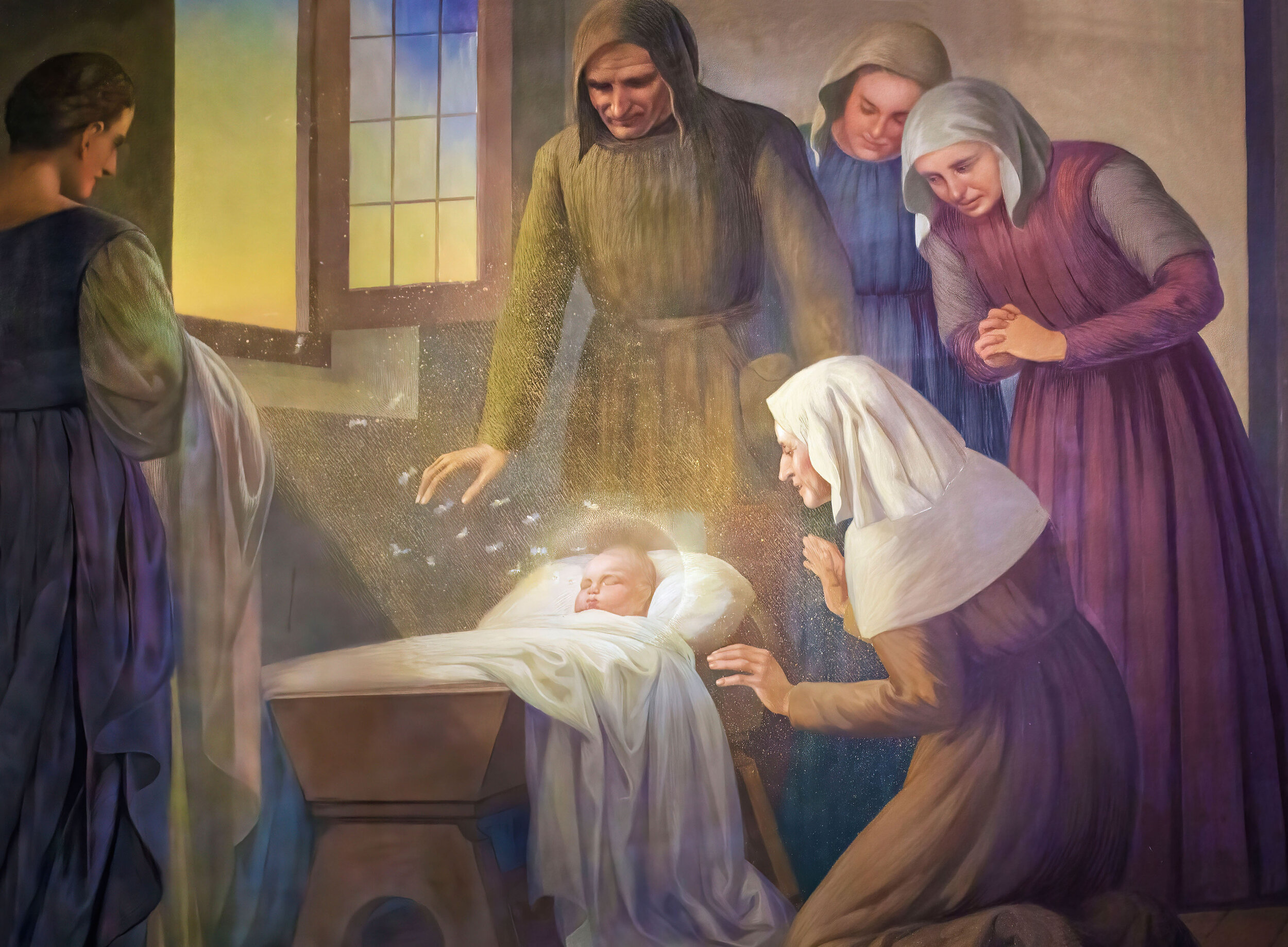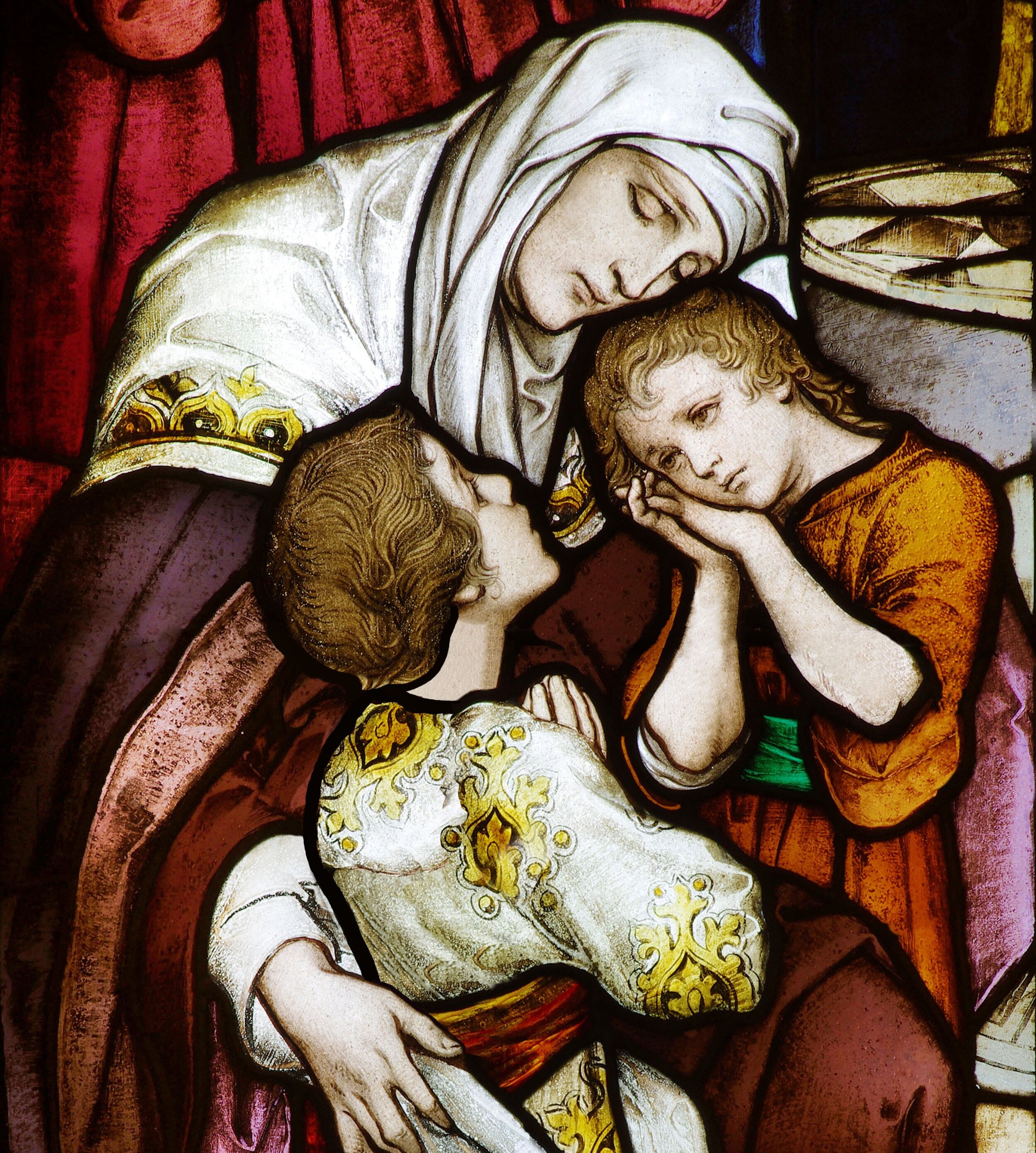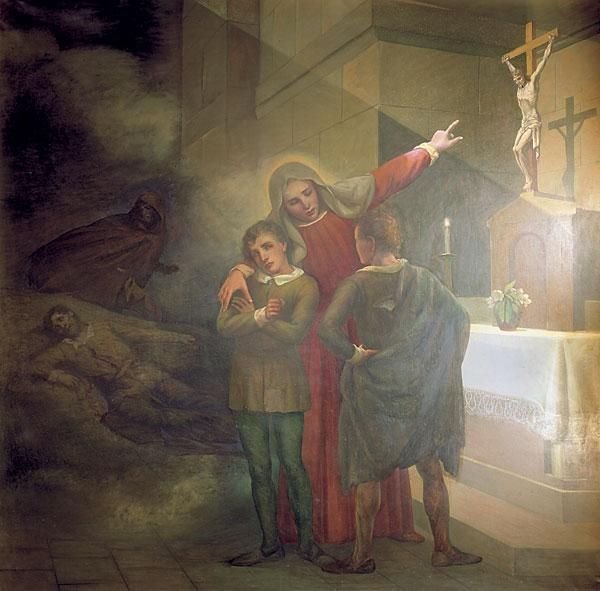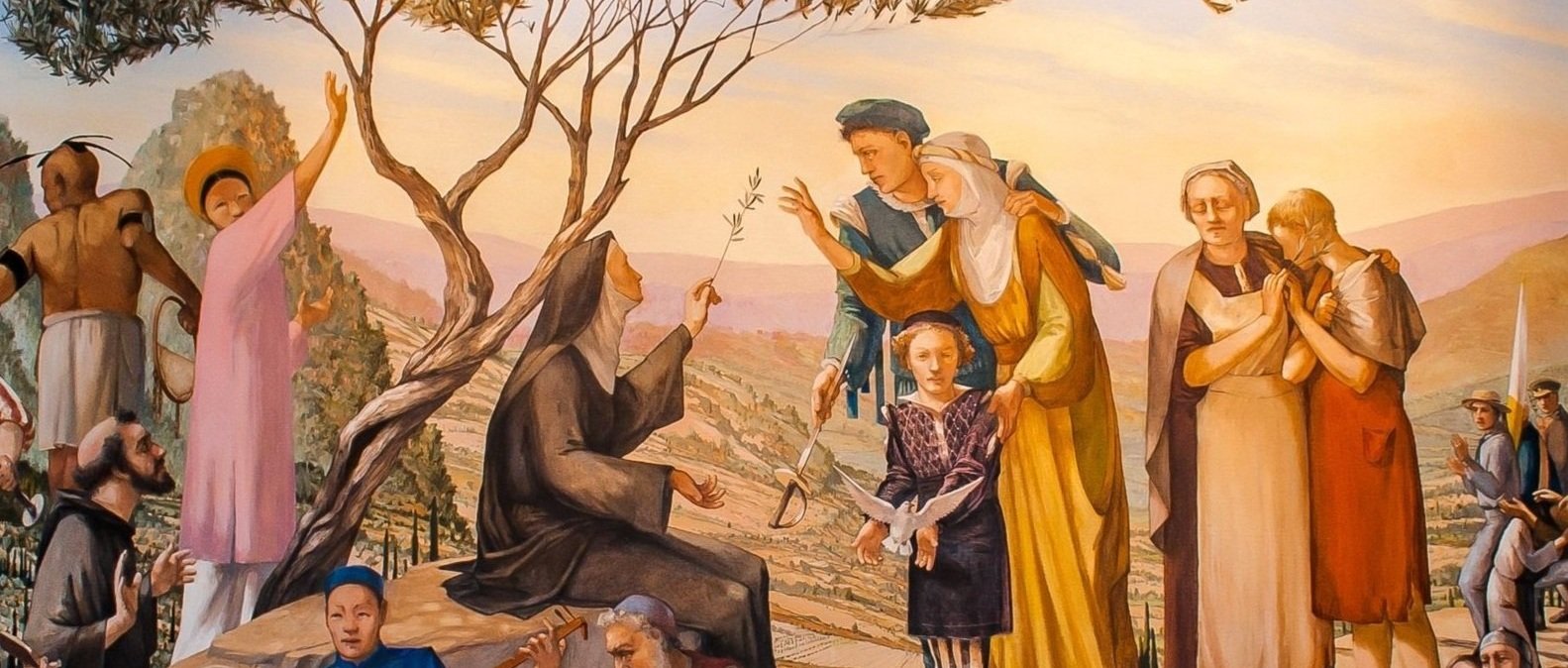


Rita: Daughter, Wife, Mother, & Widow
High in the hills of the republic of Cascia, in a tiny Umbrian village called Roccaporena, Antonio and Amata Lotti were well-respected peacemakers. In 1381, they welcomed their only child, Margherita. In the local dialect, her name meant “pearl," but she was known simply as Rita. Baptized in the church of Saint Augustine in Cascia, Rita became acquainted with the local Augustinian nuns of Saint Mary Magdalene Monastery and was attracted to their way of life. But her parents arranged a marriage for her in order to provide safety and security, and so Rita obediently married Paolo Mancini with whom she had two sons.
In the troubling political climate of the times, there was often open conflict between families. Paolo was the victim of one such conflict, and he was murdered when their sons were still young. The expectation of society at the time was that the boys should avenge the murder of their father to defend the family honor. Rita, however, influenced by the peacemaking example of her parents, pledged to forgive her husband’s killers. She faced a steep challenge, however, in convincing her sons to do the same. Tradition has it that she often pointed out to them the image of the crucified Christ and the fact that he forgave those who killed him. Within a year, however, both sons succumbed to a deadly illness leaving Rita not only a widow, but also childless. Following these tragedies, Rita placed her trust in God, accepting them and relying on her deep faith to find her way. After eighteen years of marriage, Rita felt called to a second but familiar vocation: to religious life in the Augustinian convent.

Rita: the Peacemaker
But the sisters at Saint Mary Magdalene Monastery were hesitant and refused her request. However, Rita was not discouraged, convinced that she was called to the contemplative community. She returned and asked for entry again, but the sisters even more firmly refused, citing that although Rita had forgiven her husband’s killers, her family had not. There were members of the rival family in the convent; her presence would be detrimental to community harmony. And so, inspired by her three patron saints (Saint Augustine of Hippo, Saint Nicholas of Tolentine, and Saint John the Baptist), Rita set out to make peace between the families. She went to her husband’s family and exhorted them to put aside their hostility and stubbornness. They were convinced by her courage and agreed. The rival family, astounded by this overture of peace, also agreed. The two families exchanged a peaceful embrace and signed a written agreement, putting the vendetta to rest forever. A fresco depicting the scene of the peace embrace was placed on a wall of the Church of Saint Francis in Cascia, an enduring reminder of the power of good over evil and a testament to the widow whose forgiving spirit achieved the impossible.
Rita: the Augustinian Mystic
At the age of 36, Rita finally was accepted into the Augustinian convent. She lived a regular life of prayer, contemplation, and spiritual reading, according to the Rule of Saint Augustine. For forty years she lived this routine lifestyle until Good Friday of 1442, fifteen years before her death, when she had an extraordinary experience. In contemplation before an image of Jesus that was very dear to her, the Jesus of Holy Saturday or, as it is also known, the Resurgent Christ, she was moved by a deeper awareness of the physical and spiritual burden of pain which Christ so freely and willingly embraced for love of her and of all humanity. With the tender, compassionate heart of a person fully motivated by grateful love, she spoke of her willingness to relieve Christ’s suffering by sharing even the smallest part of his pain. Her offer was accepted, her prayer was answered, and Rita was united with Jesus in a profound experience of spiritual intimacy, a thorn from his crown penetrating her forehead. The wound it caused remained open and visible until the day of her death.
Toward the end of her life, Rita progressively weakened physically. Several months before her death, she was visited by a relative from Roccaporena who asked if there was anything she could do for the ailing woman. Rita at first declined, but then made a simple request to have a rose from the garden of her family home brought to her. It was January, the dead of winter in the hills of Umbria, but upon her return home the relative passed Rita’s family garden and found to her astonishment a single fresh rose in the snow-covered garden on an otherwise barren bush. She immediately returned to the convent where she presented the miraculous rose to Rita who accepted it with quiet and grateful assurance. For the four decades she spent in Cascia’s convent, she had prayed especially for her husband Paolo, who had died so violently, and for her two sons, who had died so young. The dark, cold earth of Roccaporena, which held their mortal remains, had now produced a beautiful sign of spring and beauty out of season. So, Rita believed God brought forth, through her prayers, their eternal life despite tragedy and violence. She now knew that she would soon be one with them again.
Rita: the Saint
Rita died peacefully on May 22, 1457. An old and revered tradition records that the bells of the convent immediately began to peal unaided by human hands, calling the people of Cascia to the doors of the convent, and announcing the triumphant completion of a life faithfully lived. The nuns prepared her for burial and placed her in a simple wooden coffin. A carpenter who had been partially paralyzed by a stroke, voiced the sentiments of many others when he spoke of the beautiful life of this humble nun in bringing lasting peace to the people of Cascia. “If only I were well,” he said, “I would have prepared a place more worthy of you.” With those words, he was healed; Rita’s first miracle was performed. He fashioned the elaborate and richly decorated coffin which would hold Rita’s body for several centuries. She was never buried in it, however. So many people came to look upon the gentle face of the “Peacemaker of Cascia”' that her burial had to be delayed. It became clear that something exceptional was occurring as her body seemed to be free from nature’s usual course. It is still incorrupt today, now in a glass-enclosed coffin, in the Basilica of Saint Rita in Cascia.
To read the complete story of Saint Rita’s life, we invite you to purchase a copy of The Precious Pearl: The Story of Saint Rita in the Shrine’s Virtual Gift Shop.
The Biography of
Saint Rita of Cascia
Did You Know?
Saint Rita is the Unofficial Patroness of Baseball
Saint Rita of Cascia has long been loosely associated with the game of baseball. It’s an unofficial honor, to be sure, but when the rally towels are flying, the prayers can’t hurt!
Die-hard baseball fans might remember The Rookie, the 2002 film based on the true story of Jimmy Morris, the unlikely fast-pitcher who made it into the MLB well into his 30s. Jimmy carried a Saint Rita medal for good luck. Can you spot it in the movie?
But here’s the true story of how the Patron Saint of Impossible Causes became the unofficial Patron Saint of Baseball:
It all started during the roaring 20s. Oil business was booming, Texas was hot, and investments spread like wildfire. A group of Catholic nuns and women in New York invested in one oil rig project in Reagan County, Texas, but the project seemed ill-fated, plagued by slow progression and insufficient funds. Because of this, the men hired to work the oil rig had little to do. Cash was slim and the oil wasn’t coming, so they set up a baseball field in the shadow of the derrick. When they weren’t attending to drilling at the dry well, they played America’s favorite pastime.
Meanwhile, the women asked a priest for advice. What do you do when you’ve invested in an oil well that isn’t striking oil? The priest suggested they pray to Saint Rita, the patroness of impossible causes. He blessed a rose in Saint Rita’s name. That rose was given to Frank Pickrell, a partner of the oil project. Pickrell returned to Texas and scattered the rose petals from the top of the derrick, naming the well Santa Rita No. 1.
On May 27, 1923, the drill hit dolomitic sands, called “Big Lime” in the oil business. They had to stop drilling. The next day (just five days after Saint Rita’s Feast Day), the miraculous happened! Even though there had been no more drilling, oil burst into the sky! Here was the answer to the nuns’ prayers. The oil sprayed over a 250-yard area, and those baseball players quickly had to put down their gloves. It was time to get to work. Santa Rita No. 1 had struck oil!
The story of the Santa Rita oil rig and the ragtag group of oil men who played baseball in its shadow isn’t a well-known tale, but it was the beginning of Saint Rita’s association with the boys of summer. And even if you’re not convinced that an unofficial patron saint can help you out in the bottom of the ninth, just remember that Saint Rita most certainly is the Patroness of Impossible Causes!












